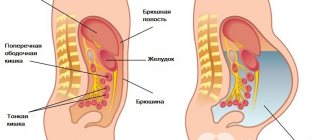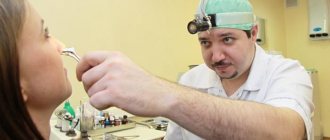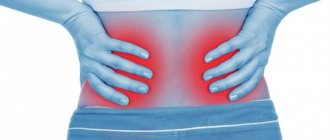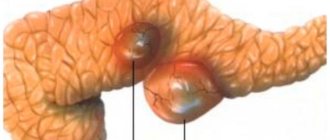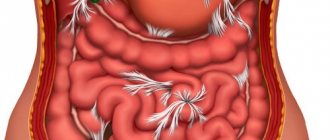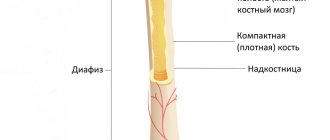June 23, 2021 Last revised: June 6, 2021 Diseases of the tongue
The mouth is a reflection of the state of the body, so many inflammatory processes occurring in the oral cavity pose a serious danger. It is necessary to carefully and regularly perform oral hygiene to prevent dangerous complications of diseases such as stomatitis and glossitis.
General information
Geographic language
Glossitis is a pathological phenomenon in which the tissues of the tongue become inflamed.
In most cases, the disease occurs due to exposure to pathogenic microflora and injury. Glossitis can also develop against the background of concomitant diseases of the oral cavity.
The disease is accompanied by a number of pronounced symptoms. The inflammatory process can occur in various forms, which affects the clinical picture. If left untreated, glossitis leads to quite serious complications.
In the ICD 10 classification, glossitis is included in the class of diseases of the digestive system (K00-K93) and belongs to the group of diseases of the oral cavity (K00-K14). In the international classification, glossitis has a code value of K14 .
Candida
The secondary version of glossitis develops not only against the background of a violation of the microflora of the digestive tract, but also against chronic inflammation of the mouth, ears and nose. A decrease in local immunity provokes the addition of fungal flora, causing hypertrophic growth of the papillae.
The area of desquamation does not migrate, but the plaque becomes bright and white. Epithelial cells that are ready for lysis proliferate, and the resistance index decreases by more than 30%.
Main features
Symptomatic manifestations of glossitis are varied. Their intensity depends on the stage of the inflammatory process and the form of the disease.
The main features include:
- Presence of white spots on the surface of the tongue
- The appearance of ulcers
- Changing tongue color
- Tissue swelling
- Limitation of tongue mobility
- Pain when chewing food
- Salivation disorders
- Unpleasant odor from the mouth
In some cases, the pathology is accompanied by a decrease in the sensitivity of the tongue and impaired taste perception. Patients may experience a burning or itching sensation or pain.
Important to remember! Inflammatory diseases affect the condition of the entire body. Therefore, against the background of glossitis, patients may have a fever, general malaise, signs of intoxication, and enlarged lymph nodes in the submandibular area.
What does the disease look like?
The presence of the disease is easy to determine by examining the tongue.
A change in its color is noted. Spots of different sizes appear on the organ or it completely changes color. A common sign is the formation of a white thick plaque. Externally, tissue swelling and the appearance of small ulcers or cracks are also noted. There are teeth marks on the sides of the tongue. The tongue itself can increase significantly in size.
Causes, symptoms and treatment of glossitis:
Specific types of glossitis and their symptoms
In addition to the types of glossitis described above, in medicine there are also several types of this disease, which are accompanied by rather specific symptoms. These types of inflammation are:
- The desquamative type of inflammation
is accompanied by the formation of red spots on the tongue, which can appear on it within a couple of days. This disease can occur during pregnancy, diathesis, metabolic disorders, as well as severe gastrointestinal diseases. Treatment of this condition involves traditional drug therapy. - Rhomboid inflammation
accompanied by thickening of the upper tissues in the middle of the tongue. In this state, the formed spot may take on a red or blue tint. A similar disease occurs during severe chronic pathologies of the digestive system. It can be treated both medically and surgically.
- Atrophic appearance
The disease develops due to vitamin deficiency. It manifests itself as the formation of a red spot on the tongue.
- Gunter type of disease
appears due to a lack of B vitamins or anemia. Due to atrophy of the upper cavity of the tongue, the organ takes on a bright red “lacquered skin” appearance. Its treatment must be comprehensive. It is advisable to have it performed by an experienced hematologist.
- Candidiasis type
inflammation most often occurs after antibacterial treatment, which led to a disruption of the microflora in the body. It is accompanied by the formation of a white coating. Its treatment involves the prescription of antimycotic drugs.
Causes of the disease
Glossitis occurs for various reasons. In most cases, the inflammatory process is provoked by the influence of pathogenic microorganisms. However, other provoking factors can also cause the disease.
Causes of glossitis:
- Injury to tongue tissue
- Infectious diseases of the oral cavity (mainly stomatitis, periodontitis, gingivitis)
- Imbalance of oral microflora due to antibiotics
- Vitamin A and E deficiency
- Decreased immunity due to infectious diseases
- Smoking and alcohol abuse
- Allergy
- Violation of oral hygiene standards
As a rule, glossitis develops under the influence of several provoking factors. In childhood, the disease often occurs due to increased sensitivity to infections and poor hygiene standards.
Is it possible to treat glossitis using traditional methods?
It’s worth saying right away that folk treatment for glossitis will be effective only in the initial stages, when the disease does not cause serious problems in a person. Otherwise, when the first signs of acute inflammation of the tongue appear, the patient is advised to consult a doctor as soon as possible and begin traditional drug treatment.
You need to understand that folk remedies for glossitis can only partially eliminate the observed symptoms, but they will not get rid of the root cause of the disease. That is why experts recommend not to waste time on self-medication, but to immediately take professional help.
A dentist is involved in the treatment of this disease, who first prescribes diagnostic procedures, and then selects a course of treatment for glossitis with drugs.
To reduce the likelihood of developing such a disease, a person is advised to carefully maintain oral hygiene, regularly undergo preventive examinations with a doctor, and give up bad habits. It is also important to eat right and avoid spicy foods.
Forms of glossitis
Deep folded glossitis
The main criterion by which the forms of the disease are distinguished is the severity of the inflammatory process.
The following forms are distinguished:
- Superficial . Characterized by damage to the outer layer of tongue tissue. In most cases, it occurs against the background of stomatitis or other concomitant pathologies. The symptoms are mild and disappear on their own within a short period of time after the provoking factor is eliminated.
- Deep . External and internal tissues are affected. This form is accompanied by the appearance of ulcers, abscesses, and ulcers. If left untreated, deep glossitis provokes severe complications, including pathologies that are life-threatening for the patient.
Depending on the nature of the course, glossitis is divided into acute and chronic. The acute form is accompanied by more intense symptoms and rapid development. As a rule, it occurs against the background of allergies. Chronic glossitis is a consequence of a protracted inflammatory process that occurs without proper treatment.
The most common migratory glossitis (geographic tongue):
Treatment
How to treat glossitis is determined by the doctor depending on the type of disease.
General principles of therapy:
- First of all, medical procedures are carried out to improve the health of the oral cavity.
- Antiseptics are prescribed for rinsing the mouth. Nystatin is suitable for adults and children.
For most types of glossitis, therapy with Miramistin, Chlorhexidine, Laripront, Furacilin is prescribed. - If an infectious form of the pathology is detected, the patient is prescribed antibiotics (for example, Amoxicillin, Doxycycline).
- The preparations Vinizol, Kamistad, Solcoseryl, Malavit are used to apply ointment compresses to the tongue.
These drugs have powerful analgesic and wound healing effects. - After completing drug therapy, it is recommended to treat the problem area with sea buckthorn oil. This will restore healthy microflora in the oral cavity.
If glossitis is a consequence of a lack of vitamins, reduced immunity or an infectious disease, complex therapy is carried out with the obligatory elimination of the root cause.
Glossitis is a disease that is not only unpleasant, but also dangerous, capable of causing serious complications and consequences.
The patient can expect serious breathing problems, the formation of papillomas on the tongue, and the spread of the inflammatory process to other organs and systems. To prevent them, you need to take care of your health and regularly visit the dentist's office.
Kinds
In modern medicine, there are many types of glossitis. They differ in the nature of symptoms and treatment features.
The most common types of glossitis are presented in the table below.
| Name | Description and symptoms |
| Desquamative (Geographical) | It is a focal lesion of the epithelial tissue of the tongue. A heterogeneous white surface with red spots of different shapes forms on the surface, which makes the tongue look like a geographical map. Periodically, the inflamed areas heal, however, at the same time, nearby tissues are damaged. The tongue papillae peel and flake off. Associated symptoms:
|
| Candida | Occurs against the background of a fungal infection. It occurs predominantly in a chronic form with regular exacerbations. The tongue becomes very swollen and a brown coating forms on it. In severe cases, large painful ulcers form on the surface. Associated symptoms:
|
| folded | It is a congenital anomaly of language development. Accompanied by the formation of transverse grooves on the tongue. Due to the abnormal structure of the tissue, it is more sensitive to infections, which is why there is a possibility of the formation of a concomitant inflammatory process. There are no obvious symptoms. |
| Diamond-shaped | A diamond-shaped red spot appears on the root of the tongue. Periodically, the red area acquires a natural color, however, after a while it appears again. The spot may be smooth or have small bumps. There are no papillae in the affected area. Associated symptoms in rare cases:
|
| Gunterovsky | It is accompanied by the death of the tongues of the papillae, as a result of which the organ becomes bright red or crimson in color. Associated symptoms:
|
| Catarrhal | The lateral areas of the tongue become inflamed. If left untreated, the inflammatory process deepens. The papillae swell and gradually atrophy. Severe redness is noted. A coating with a grayish tint forms on the surface. Associated symptoms:
|
| Atrophic | It is accompanied by the gradual death of the tissues of the tongue, as a result of which it becomes thinner. The papillae of the tongue atrophy, the organ becomes smooth. Associated symptoms:
|
| Villous | The lingual papillae increase in size. The filiform papillae are similar to villi, as they lengthen and become dark. This makes the tongue appear black. Pathology appears mainly due to injuries. Associated symptoms:
|
| Ulcerative | A large number of erosive foci and ulcerative formations appear. There is bleeding and discharge of purulent substance. Associated symptoms:
|
| Mycotic | It is provoked by fungal microorganisms. Characteristic spots of different sizes appear on the surface of the tongue. Pink or red spots. Associated symptoms:
|
| Herpetic | Small blisters filled with liquid form on the tissues. The herpetic rash does not go away for a long period, however, it gradually begins to heal. Associated symptoms:
|
| Hypertrophic | A gray or yellow coating appears on the surface of the tongue. Teeth marks remain on the organ. It swells greatly and increases in size. Associated symptoms:
|
| Allergic | It is a reaction to a specific allergen, which is food or oral hygiene products. Accompanied by severe redness and swelling of the tissues. Associated symptoms:
|
| Viral | Triggered by a viral infection. Ulcers and erosions appear on the tongue, as well as gray or dark brown spots. Associated symptoms:
|
| Interstitial | Tissue damage caused by treponemes, the causative agents of syphilis. Accompanied by thickening of the tissues of the tongue, swelling, and impaired mobility. If left untreated, the organ remains in this position for life. Associated symptoms:
|
Reference! It is extremely difficult to independently determine the type of glossitis. To do this, you need to undergo a series of diagnostic procedures.
Scrotal glossitis (folded tongue):
What does the pathology look like?
It is difficult to answer this question unambiguously, because there are many varieties of glossitis. Each of them has its own characteristic symptoms, external signs and features. Basically, during a pathological process, the muscular organ swells, turns red, spots, grooves, plaque, ulcers, and seals may appear on it. The tissue structure changes noticeably, and the lingual papillae increase in size. In some cases, on the contrary, the papillae are completely smoothed out, and the muscular organ becomes smooth and glossy.
Diagnostics
The diagnostic complex for identifying glossitis includes the following procedures:
- Questioning about bothersome symptoms
- Visual inspection
- PCR diagnostics
- Bacteriological culture
- Serological blood test
- Cytological analysis
The results of the presented methods make it possible to confirm the diagnosis, determine the form of the disease, its severity, and prescribe the most effective treatment option for a particular patient.
Prevention
To prevent glossitis, you must adhere to the following rules:
- visiting the dentist's office at least 2 times a year;
- regular oral hygiene;
- removing plaque and tartar from the surface of teeth;
- treatment of diseases that lead to glossitis;
- exclusion of spicy and salty foods from the diet;
- strengthening the immune system;
- rejection of bad habits.
Regular prevention of glossitis should be performed by people who are at risk. We are talking about patients who smoke, abuse alcohol, prefer spicy or salty foods, and regularly use mouth rinses and mouth fresheners. All people who neglect visits to the dentist are at risk for glossitis and any other disease of the teeth, gums or tongue.
Therapy methods
Treatment procedures are prescribed individually. It is not recommended to treat glossitis on your own, as this can lead to irreversible consequences.
Medication
Aimed at eliminating the cause of the pathology and its symptoms. It is prescribed taking into account the individual characteristics of the patient, including his age and the presence of concomitant diseases.
The following groups of drugs are used:
Antibiotics . Used exclusively for severe forms of inflammation. The action is aimed at destroying pathogenic microflora that provokes glossitis. Drugs from the group of cephalosporins (Cefotaxime, Ceftriaxone, Cefodox), and Penicillin-containing drugs (Amoxicillin, Amoxiclav, Augmenitin) are used.
Cefotaxime
Ceftriaxone
Cefodox
Amoxicillin
Amoxiclav
Augmentin
Antifungal agents . Prescribed for mycotic and candidal glossitis. Orally take medications based on fluconazole (Diflucan, Mikosist, Fucis), Nystanin.
Diflucan
Mikosist
Futsis
Nystatin
Antiviral drugs . Effective against viral forms of pathology. For therapeutic purposes, the drugs Gerpevir, Cycloferon, Acyclovir are prescribed.
Gerpevir
Cycloferon
Acyclovir
Anti-inflammatory drugs . Prescribed to eliminate the symptoms of glossitis. The drugs reduce temperature, eliminate pain, and relieve tissue swelling. In therapeutics, drugs based on Paracetamol, Nimesulide, Diclofenac are prescribed.
Paracetamol
Nimesulide
Diclofenac
Means for local treatment
Most types of glossitis are treated with local medications. This treatment is quite effective, as it allows you to act directly on the affected tissue.
Local preparations:
Furacilin
Chlorhexidine Chlorophyllipt Borax solution in glycerin
Hexoral
Stomatidin
Metrogil Denta
Solcoseryl
The presented products have an antiseptic effect, help relieve swelling, and disinfect tissues. The intake must be carried out in accordance with the instructions and recommendations of the attending physician.
Traditional methods of treatment
To treat tongue glossitis at home, the following folk remedies :
- Tea tree oil . The product has pronounced antiseptic properties. It is necessary to mix tea tree oil and sea buckthorn oil in equal quantities. The finished mixture is taken into the mouth and held for a minute.
- Chamomile infusion . To prepare, pour 1 spoon of dried flowers into a glass of boiling water. When the medicine is infused, it is used to rinse the mouth. It is recommended to repeat the procedure after each meal.
- Soda solution . A common antiseptic rinse. To prepare, add 0.5 tablespoons of soda and salt to a glass of warm water. Rinse should be repeated every 2 hours.
- Hydrogen peroxide . Used to rinse the mouth. Add 2 tablespoons of peroxide solution to 1 glass of warm water and mix thoroughly. The procedure is repeated after each meal.
- Eucalyptus oil . Add 15-30 drops of oil to 1 glass of water. Rinse your mouth with the prepared mixture for glossitis 3-4 times a day.
- Oak bark decoction . 3 tablespoons of dry bark are poured into 2 glasses of water, heated in a steam bath, and boiled for 20 minutes. After this, the broth is infused until completely cooled, then decanted. Used to rinse the mouth 3 times a day.
Traditional methods of treating glossitis:
Application of vitamins
When treating glossitis, it is recommended to take complexes including vitamins A, B, C, E. Such biologically active substances promote tissue healing and reduce their sensitivity to bacteria. Vitamin B12 supplementation can be used for topical treatment.
Surgery
Surgical therapy is used in rare cases.
The need for radical treatment occurs mainly with the development of complications. Indications for surgery:
- Villous glossitis . During the operation, the keratinized papillae are removed.
- Deep form of glossitis . The operation is prescribed when phlegmon forms. The purulent-inflammatory formation is removed, after which the cavity is cleaned and treated with antiseptic agents.
Diet
During the treatment period, patients are recommended to have a gentle diet, which is necessary to reduce the load on the masticatory apparatus and eliminate discomfort when eating.
Principles of nutrition for glossitis:
- Only thermally processed food is allowed
- The temperature of consumed food and drinks is from 30 to 40 degrees
- Avoid spicy, sour, salty foods from the diet
- It is recommended to avoid carbonated drinks, coffee, and strong tea.
- Be careful when eating foods that contain bones (especially fish)
- Smoked meats and canned foods are excluded from the diet
- It is not recommended to eat citrus fruits and sweets
In general, treatment for glossitis is a set of procedures aimed at eliminating the causes and symptoms of the disease and activating the tissue healing process.
Validity of using folk recipes
To eliminate the main symptoms of the disease, many use traditional therapy methods. In particular, rinse the mouth with an infusion of chamomile and oak bark, a soda solution, treat the affected tissues with tea tree and eucalyptus oils - all these remedies are quite acceptable, provided that you do not limit yourself to this, but use it as a supplement to what the doctor has prescribed. Otherwise, it will be possible to influence only the external manifestations, and it will not be possible to eliminate the causes of the disease, which will subsequently lead to advanced glossitis and its complications.
What traditional medicine methods cannot be used: it is forbidden to treat the affected areas with hydrogen peroxide, iodine and brilliant green - all this can cause burns and serious tissue damage.
Glossitis in children
When treating glossitis in children, a number of principles are followed.
The main one is the safety of the selected medications for the child’s body, as well as ease of use. Glossitis in children is treated using the following means :
- Antiseptic drugs . It is recommended to use the drugs Hexasprey, Angilex, and Hexalize lozenges.
- Antibiotics . Prescribed at temperatures above 38.5 degrees.
- Immunomodulators . It is advisable to take for glossitis caused by infectious infection.
- Antihistamines . Prescribed for allergic glossitis.
- Analgesics . Necessary to eliminate pain. The drugs Panadol, Paracetamol, Ibuprofen are used.
Non-traditional treatment methods are recommended to be used after prior consultation with a doctor.
Language structure
To understand what glossitis is, consider the structure of the tongue.
Language phylogenetically arose as an organ of touch and mechanical action. However, in the process of evolution, it developed and was supplemented with several more functions and properties. It is an organ that has taste buds and glands, in addition to muscles, the usual mucous membrane, nerves and blood vessels. The tongue is called the “mirror of the stomach,” and by its appearance one can assess the physical condition of the gastrointestinal tract and the entire body as a whole. The shape of the tongue and its position may vary depending on the functional state. At rest, it is spade-shaped and almost completely fills the oral cavity. The tongue is involved in speech, chewing, taste and salivation. When a newborn or infant sucks mother's milk, the tongue plays a significant role. The tongue is a muscular organ that is covered with a mucous membrane. The body of the tongue is located between the upper and lower jaws.
At the back of the tongue there is a lymphoid formation, the so-called lingual tonsil.
The tongue is covered with papillae of four types:
- leaf-shaped, located on the lateral surface of the tongue and containing taste buds and glands. They are involved in the production of secretion, which resembles viscous saliva;
- grooved , located at the root of the tongue. They are considered the largest and smallest papillae of the tongue containing taste buds;
- mushroom-shaped , randomly located along the entire back of the tongue, containing taste buds with taste receptors;
- filamentous , located on the back of the tongue, are the most numerous. Their functions include food retention and touch. There are no taste buds in these papillae.
Complications
Lack of timely treatment leads to the development of an abscess. This condition is potentially life-threatening as it can lead to blood poisoning.
Possible complications also include:
- Spread of swelling in the throat area
- Difficulty breathing due to enlarged tongue
- Impaired mobility of the muscles responsible for moving the tongue
- Weakening of the body due to prolonged refusal of food
- Sudden temperature changes
Important to remember! The development of complications is often accompanied by general signs of intoxication. These include nausea, vomiting, headaches, chills, and cold sweats. The presence of such symptoms indicates the need for urgent medical attention.
Complications that result from lack of treatment
As a rule, when the “trigger” disease that causes inflammation of the organ of taste and speech is identified and treated, glossitis easily and safely recedes. If the disease is advanced, the patient may experience disruption of normal respiratory function, taste perception, and sound pronunciation. Some forms of pathology, for example, black hairy tongue, lead to severe disruption of aesthetics and the appearance of complexes.
There are also more dangerous problems that can be encountered in the absence of measures or incorrectly chosen treatment tactics: neck damage, the development of abscess and phlegmon, cancer.
Answers to popular questions
This section provides answers to the most frequently asked questions regarding glossitis.
Is glossitis contagious?
Some forms of glossitis can be transmitted from an infected person to a healthy person. Transmission occurs through contact, for example, through kissing. It is also possible to become infected by using a patient's toothbrush. The most contagious forms are considered to be candidal, mycotic, and herpetic glossitis.
Which doctor should I see?
If symptoms of glossitis appear, it is recommended to seek help from a therapist, dentist, or otolaryngologist. If necessary, the patient is sent for auxiliary examination.
How long does it take to treat the disease?
The duration of therapy depends on the form of the pathology, as well as how timely treatment began. Significant improvement, with the right approach to therapy, occurs within 1-2 weeks.
Is it permissible to treat glossitis with iodine?
It is prohibited to use iodine for local treatment of the tongue with glossitis. Iodine is an aggressive substance that will cause severe pain and burning in the area of application. In addition, systematic application of iodine can cause a burn to the mucous membrane.
Nutrition and diet
Food for glossitis should be gentle on the oral mucosa.
Characteristics of diet for tongue lesions:
- food must be natural, freshly prepared, thermally processed,
- the temperature of food and liquid should be warm, within 36-40C,
- food should be soft, preferably ground, homogeneous,
- do not drink carbonated and sour drinks,
- refrain from coffee and strong tea,
- exclude injuries from bones from fish and poultry,
- do not eat spicy, hot, salty and sour foods (spices, vinegar dressings, all types of peppers, mustard, etc.),
- refrain from sweets (especially lollipops, chemical sweets), since glucose is a good food for many microorganisms,
- do not drink alcohol, refrain from smoking,
- refrain from eating sour fruits (especially citrus fruits) and berries,
- do not consume canned foods, pickles,
- exclude smoking from the diet.
If there are concomitant diseases that cause glossitis, appropriate therapeutic diets are followed:
- Table No. 1, No. 2, No. 3, No. 4 – for diseases of the gastrointestinal tract,
- Table No. 5 – for diseases of the liver and biliary tract,
- Table No. 12 – for diseases of the nervous system,
- Table No. 13 – for acute infectious diseases and so on.
Severity and form of the disease
Glossitis can be of inflammatory or non-inflammatory origin.
Inflammatory glossitis is:
- bacterial;
- viral;
- candida.
Atrophic glossitis is non-inflammatory. Symptoms of inflammation appear when a bacterial and viral infection is associated, which occurs in almost every case. In this regard, treatment of atrophic glossitis includes anti-inflammatory therapy.
- At the initial stage, mild symptoms are noted, the tongue is red, and pain appears when chewing.
- With moderate severity, the disease is complemented by the appearance of ulcers, swelling, and halitosis.
- Advanced atrophic glossitis is complicated by phlegmon. It becomes difficult for the patient to chew and talk, severe pain bothers him, the tongue becomes covered with a dark coating, which is especially pronounced in the area of aphthae and ulcers.



